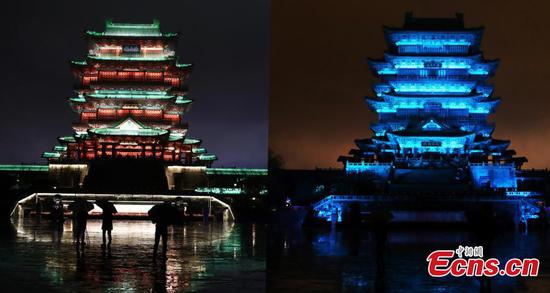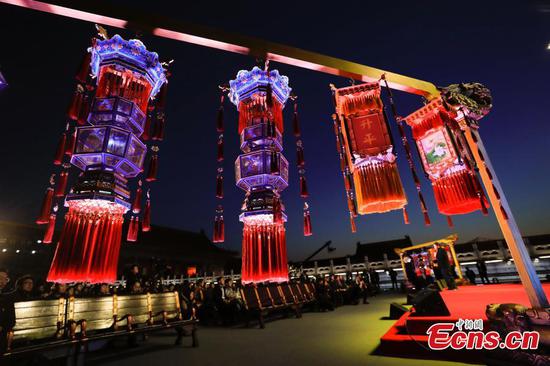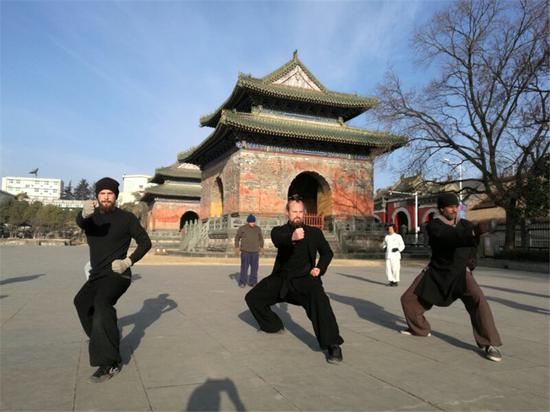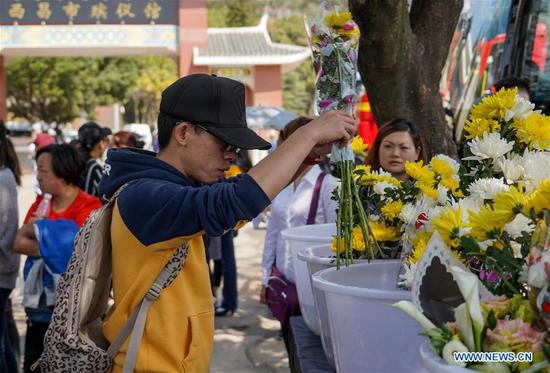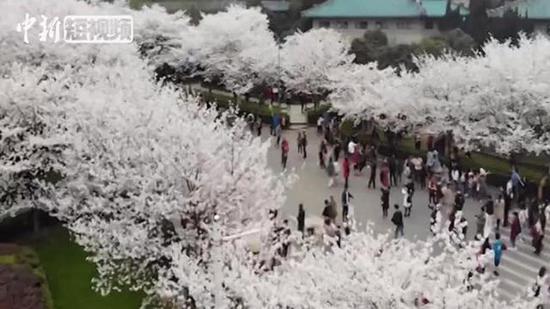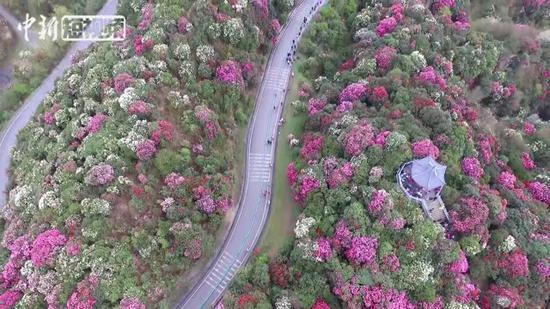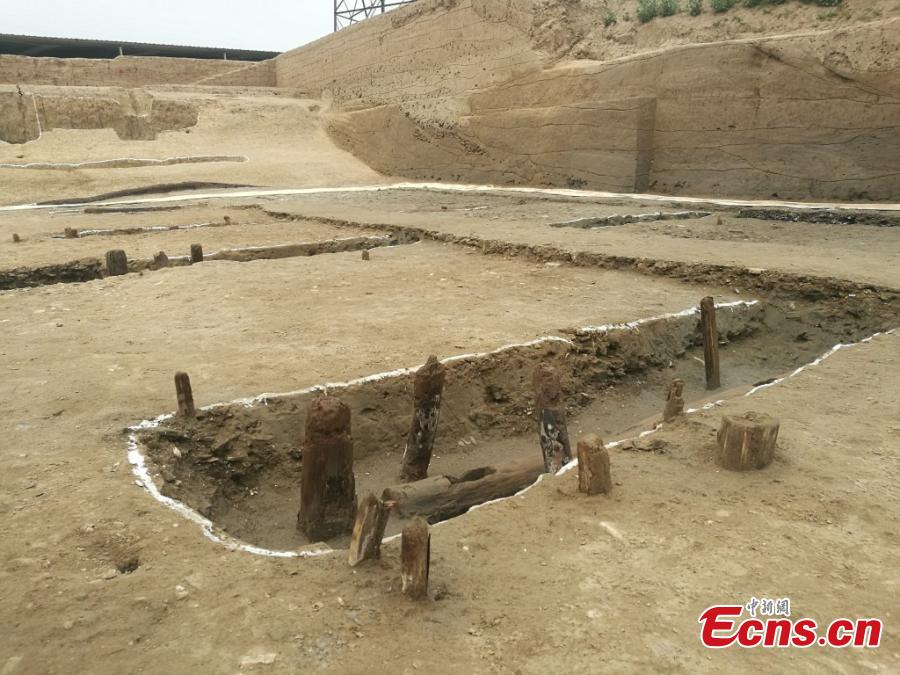
A view of an excavation at the Huangsipu ruins in Yangshe Town, Zhangjiagang City, Jiangsu Province, April 2, 2019. Archaeologists have agreed the ruins are where Jianzhen, a Buddhist monk in the Tang Dynasty (618-907), set off to visit Japan in his sixth, and also final, attempt to do so. Nanjing Museum has organized six excavations at the site since 2008, discovering remains of a bridge, a house and a well dating back to the Tang and Song dynasties. Huangsipu is considered to have been an important port on the lower reaches of the Yangtze River. (Photo: China News Service/Zhong Sheng)
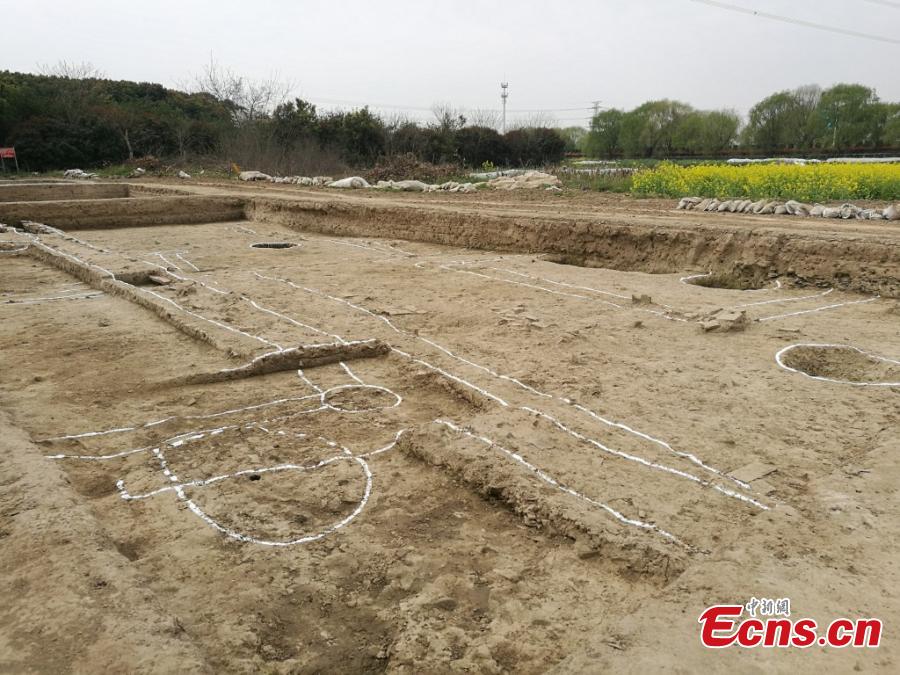
A view of an excavation at the Huangsipu ruins in Yangshe Town, Zhangjiagang City, Jiangsu Province, April 2, 2019. Archaeologists have agreed the ruins are where Jianzhen, a Buddhist monk in the Tang Dynasty (618-907), set off to visit Japan in his sixth, and also final, attempt to do so. Nanjing Museum has organized six excavations at the site since 2008, discovering remains of a bridge, a house and a well dating back to the Tang and Song dynasties. Huangsipu is considered to have been an important port on the lower reaches of the Yangtze River. (Photo: China News Service/Zhong Sheng)
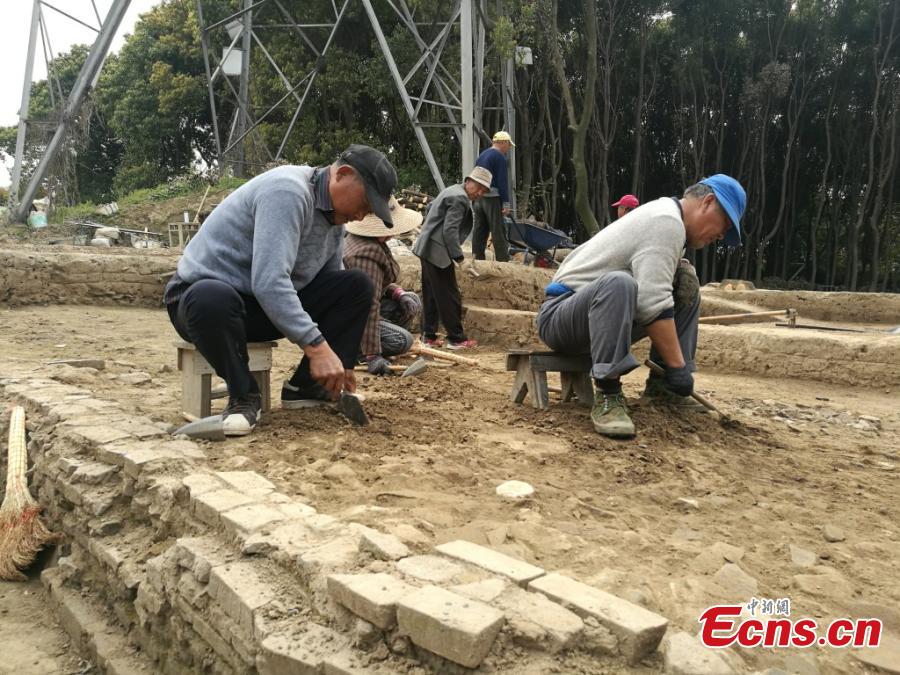
A view of an excavation at the Huangsipu ruins in Yangshe Town, Zhangjiagang City, Jiangsu Province, April 2, 2019. Archaeologists have agreed the ruins are where Jianzhen, a Buddhist monk in the Tang Dynasty (618-907), set off to visit Japan in his sixth, and also final, attempt to do so. Nanjing Museum has organized six excavations at the site since 2008, discovering remains of a bridge, a house and a well dating back to the Tang and Song dynasties. Huangsipu is considered to have been an important port on the lower reaches of the Yangtze River. (Photo: China News Service/Zhong Sheng)
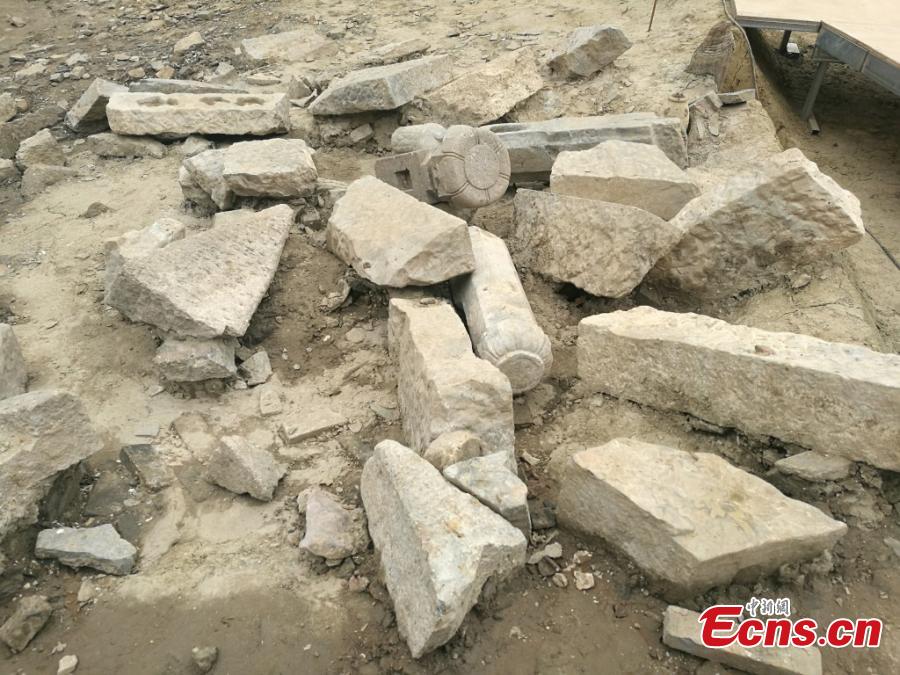
The remains of a stone bridge are seen at the Huangsipu ruins in Yangshe Town, Zhangjiagang City, Jiangsu Province, April 2, 2019. Archaeologists have agreed the ruins are where Jianzhen, a Buddhist monk in the Tang Dynasty (618-907), set off to visit Japan in his sixth, and also final, attempt to do so. Nanjing Museum has organized six excavations at the site since 2008, discovering remains of a bridge, a house and a well dating back to the Tang and Song dynasties. Huangsipu is considered to have been an important port on the lower reaches of the Yangtze River. (Photo: China News Service/Zhong Sheng)
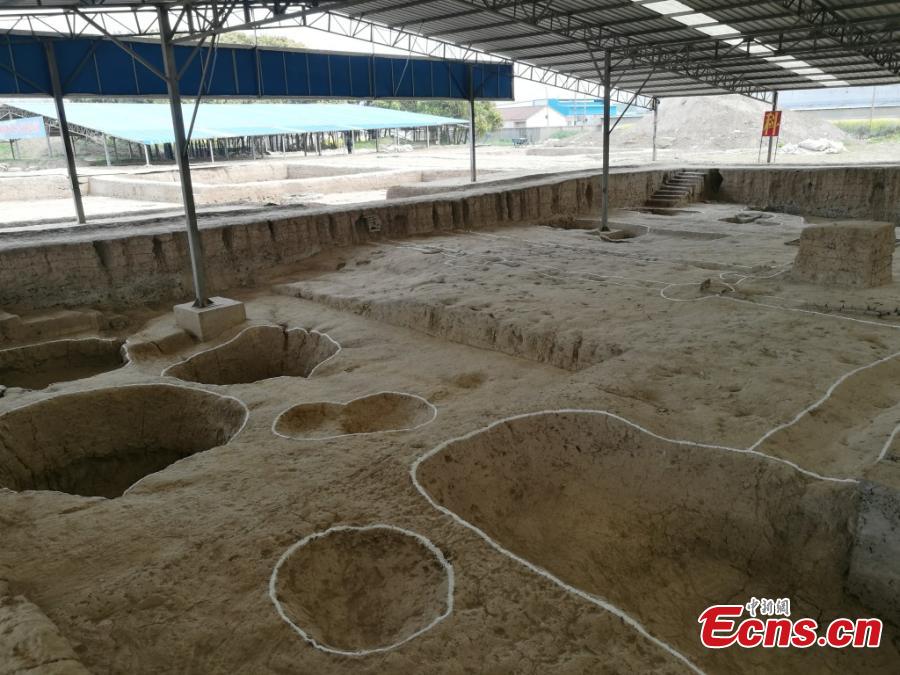
A view of an excavation at the Huangsipu ruins in Yangshe Town, Zhangjiagang City, Jiangsu Province, April 2, 2019. Archaeologists have agreed the ruins are where Jianzhen, a Buddhist monk in the Tang Dynasty (618-907), set off to visit Japan in his sixth, and also final, attempt to do so. Nanjing Museum has organized six excavations at the site since 2008, discovering remains of a bridge, a house and a well dating back to the Tang and Song dynasties. Huangsipu is considered to have been an important port on the lower reaches of the Yangtze River. (Photo: China News Service/Zhong Sheng)










